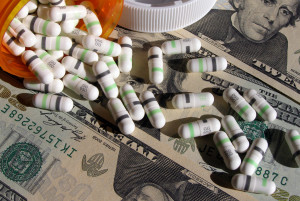AARP Hearing Center
Don’t Hate the Player, Hate the Game: Drug Pricing in America
By Leigh Purvis, May 9, 2016 04:25 PM

Turing Pharmaceuticals recently faced intense public criticism after the company bought a 62-year-old drug and increased its price by 5,000 percent. Turing’s unusually outspoken chief executive officer, Martin Shkreli, strongly defended the decision, even going so far as to argue that the new price was still below market value. Shkreli’s brazenly unapologetic attitude — along with some eyebrow-raising behavior on social media — quickly earned him the title of “ most-hated man in the United States.” A few months later, his arrest on unrelated charges of securities fraud was widely greeted with cheers.
Unfortunately, this moment of schadenfreude has diverted attention from a much larger problem: While Turing Pharmaceuticals’ actions were indefensible, they were also far from unique. Equally discouraging is that everything the company did was completely legal — and there is nothing to prevent it from happening again.
Read: New coalition pushes for lower prescription drug prices »
Prescription drug price increases are actually incredibly common in this country, with some drugs experiencing multiple price increases in a single year. In fact, research consistently shows that many drug manufacturers raise the prices of their products annually at rates that are substantially higher than inflation. Over time, such price increases add up. For example, the price of cancer drug Gleevec has more than tripled — increasing from $24,000 per year to over $90,000 per year — since its launch in 2001. Unlike what happened with Turing Pharmaceuticals, however, these “normal” increases rarely lead to public outrage.
Equally problematic is the skyrocketing prices at which new products enter the market. There is strong evidence that, instead of pricing their products competitively, many drug manufacturers are setting their launch prices at, or slightly above, the prices of existing products, resulting in an endless race to the top. This phenomenon is particularly evident among cancer drugs, where the median launch price has more than doubled — from $4,500 per month to more than $10,000 per month — over the past decade.
The combination of high launch prices and subsequent price increases has led to prescription drug spending trends that are widely viewed as unsustainable. And whether the public recognizes it or not, virtually everyone in the U.S. is already feeling the effects of drug manufacturers’ behavior.
Read more at National Women's Health Network
Photo courtesy of StockMonkeys.com/Flickr

Leigh Purvis is the director of health services research in AARP’s Public Policy Institute. Her primary areas of expertise are prescription drug pricing, biologic drugs and prescription drug coverage.































































